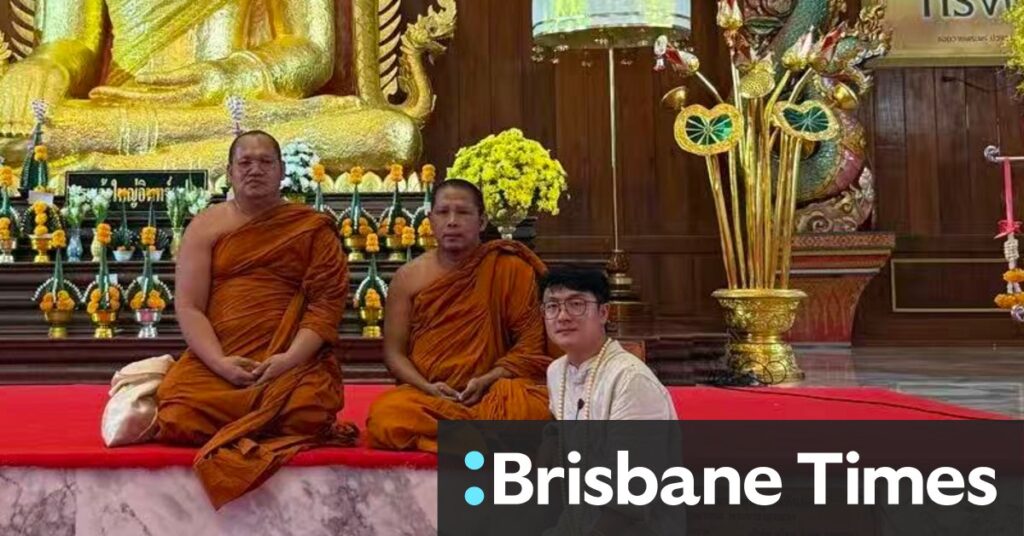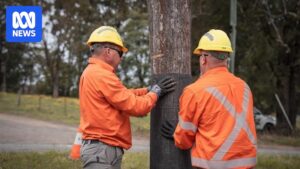
In a Buddhist temple on the border of northeastern Thailand, 28-year-old Chinese man Icey Li was in the midst of chanting his morning meditation when his buzzing phone interrupted the tranquility. It was his migration agent urging him to get on a flight back to the United States as soon as possible.
US President Donald Trump had just signed an executive order at the White House, adding a $100,000 fee for H-1B visa applicants, to be paid by the US-based companies acting as sponsors for the skilled workers. Without the payment, any H-1B visa holders trying to enter the US would be “restricted” at the border, the order said, with the measure to come into effect barely 24 hours later at 12:01 am on Sunday.
“After being in America for 10 years, this was the first time I felt like I couldn’t go back,” said Li, who had just been granted an H-1B visa for a job in the film industry in Los Angeles. He immediately began making calls as he scrambled to figure out how he could get from a remote village, 650 kilometers from Bangkok, back onto American soil before the deadline.
Immediate Impact and Clarifications
The announcement unleashed a wave of panic, chaos, and confusion among visa holders, their migration lawyers, and employers. Many workers who, like Li, were overseas when Trump signed the order, rushed to fly back to the US, spending thousands of dollars on last-minute flights. Others abandoned their outbound travel plans, fearing they would be blocked at the US border on their return.
Footage circulated on social media of panicked Indian passengers receiving the news of the visa changes while boarding an Emirates flight from San Francisco to Dubai. The captain could be heard urging calm over the broadcast system and encouraging those who did not want to fly to disembark.
By Saturday, the White House was forced to clarify that the $100,000 fee was a one-time cost that applied to new applicants, not renewals or current visa holders, and those outside the country would not be affected trying to re-enter.
“I found my body couldn’t stop shaking,” said David Yang, a 31-year-old Chinese engineer, who requested a pseudonym to speak about the issue. “The new policy creates a lot of uncertainty about my identity – being safe this time doesn’t mean being safe next time, since he [Trump] still has three years to create more chaos,” Yang said.
Background on H-1B Visa Program
The H-1B visa program was set up to allow American companies to hire “highly specialized” foreign skilled workers with a bachelor’s degree or higher qualification, for up to six years. The US government caps new H-1B visas at 85,000 each year, awarding them through a lottery system. There are already about 700,000 H-1B visa holders in the US and another half a million dependents, according to Capital Economics.
Tech giants Amazon, Google, Microsoft, Apple, and Meta, which have sought to boost their ties with the Trump administration, are among the top employers of the visa holders, using the program to bring in coders, engineers, and software developers. Indian IT service firms Infosys and Tata Consultancy are also heavily reliant on the program to send workers to the US.
Indian applicants are by far the biggest beneficiaries of the program, securing 71 percent of the visas in the 2024 lottery, followed by Chinese applicants at about 12 percent.
Political and Economic Implications
US Commerce Secretary Howard Lutnick helped drive the confusion in the immediate aftermath of the executive order. Answering questions alongside the president in the Oval Office, Lutnick said the $100,000 fee would apply annually for both renewals and new visas.
“That’s the point of immigration – hire Americans and make sure the people coming in are the top, top people. Stop the nonsense of letting people just come into this country on these visas that were given away for free,” Lutnick said.
The turmoil has added to the already strained ties between the US and India, after the Trump administration imposed 50 percent tariffs on Indian exports as punishment for New Delhi’s purchase of Russian oil. Meanwhile, China has signaled it sees opportunity in the US’s spurning of foreign tech talent, and in October will introduce its new K visa to recruit young overseas science and tech workers.
“China welcomes outstanding talent from all industries and fields to come to China and settle down there, jointly promoting the continuous progress of human society and achieving personal career development,” a Chinese Foreign Ministry spokesperson said on Monday.
This development follows a series of immigration crackdowns by the Trump administration, which views immigration as a threat to American jobs and industries. The move represents the president’s unwillingness to spare even his supporters in the tech sector from the broader immigration agenda.
The implications of this executive order will likely reverberate through the tech industry and beyond, as companies and skilled workers navigate the new landscape. The uncertainty surrounding immigration policies continues to challenge the stability and planning of businesses relying on international talent.






